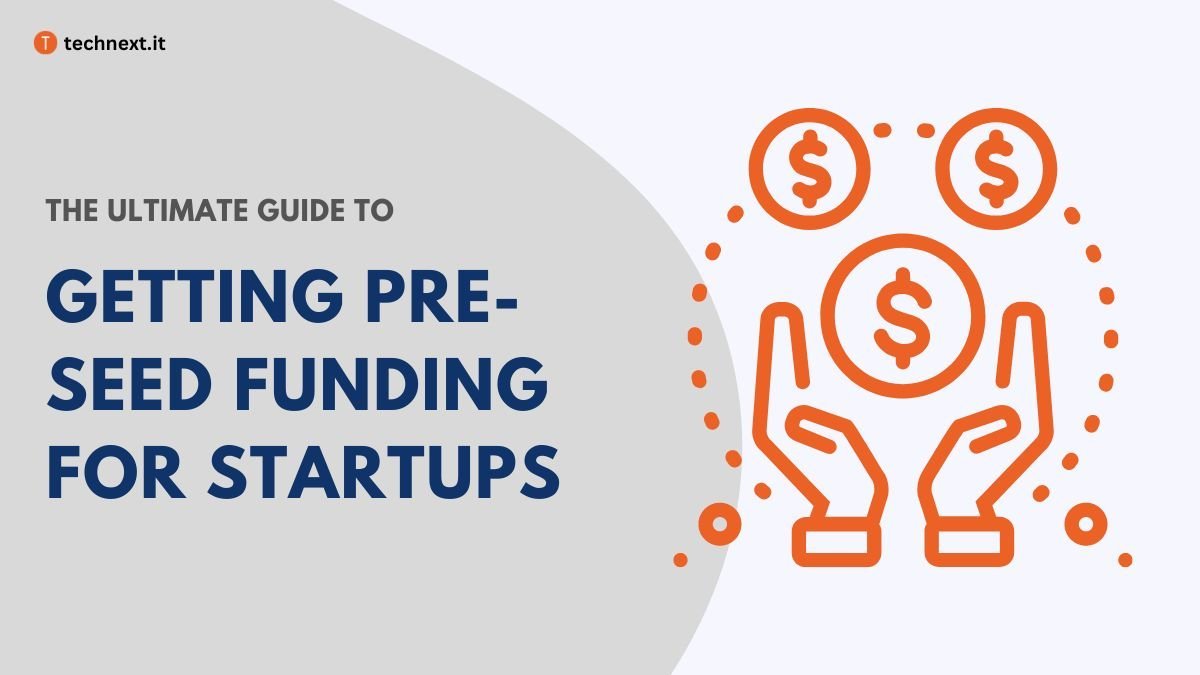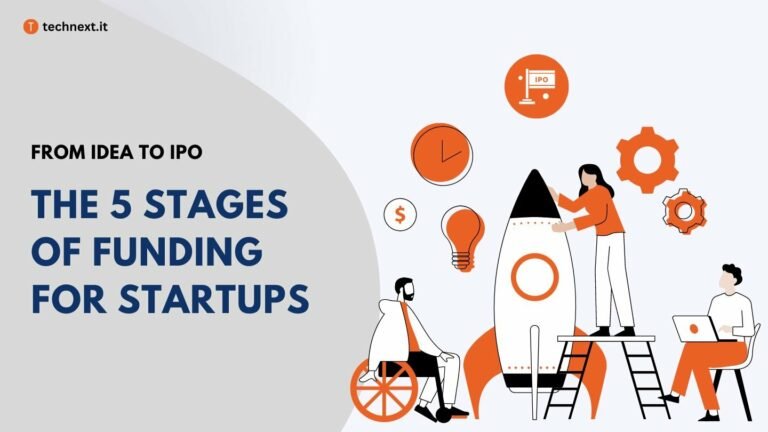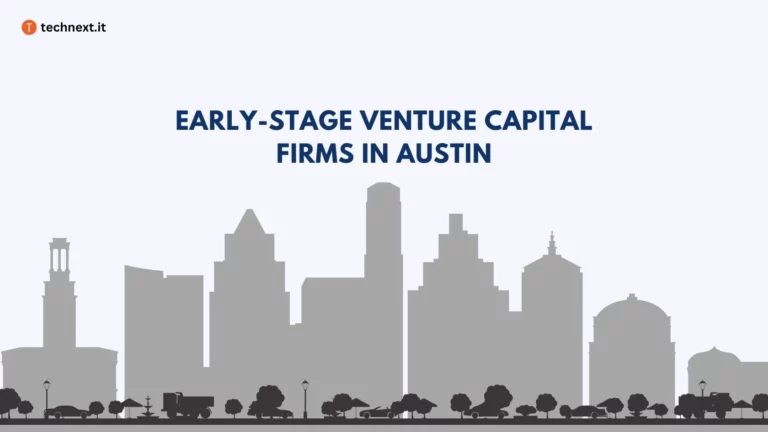The Ultimate Guide to Getting Pre-Seed Funding for Startups
Explore the secrets to getting pre-seed funding for startups, including what you need to do to convince the investor. Also, a simple guide to use pre-seed financing and continue growing.

Securing the funding to bring the idea to life is the first challenge a funder must face. Although managing investors becomes relatively easier when a startup has proof or a user base, it is still hard to get funding at the initial stages of a startup.
Not too long ago, startup founders had to bootstrap their companies all the way to the early stage. However, today, a number of VCs are open to investing in early-stage startups, including the pre-seed phase. This has resulted in more entrepreneurs being able to pursue their dream, confident that they can secure the funds needed to start their startups.
You may be wondering what pre-seed financing really is. When should you take them, and how to manage pre-seed financing for your startup? Let’s find out.
Fundamentals of Pre-Seed Funding
What is pre-seed funding?
Pre-seed funding is the initial investment round for a startup when the business is just getting started. In this phase, the founders work to bring their concept to life, and the investors contribute a small amount. As the name suggests, the pre-seed funding stage comes before the seed round, and an entrepreneur doesn’t have much to show for at this stage.
It wasn’t a part of the startup funding stages until very recently and is still not considered an official funding round like a seed round or series A round. Even in 2023, only a handful amount of founders manage to secure pre-seed funding.
As a result, most of the founders bootstrap (over 70%) at this stage or find a few (mostly informal) ways to get money. Self-financing, friends and family, and company pitching events are the most prevalent pre-seed capital sources.
Is it Worth Taking Pre-Seed Funding?
On average, founders raise 50,000-200,000 in the pre-seed stage in exchange for 5-10% equity. If you compare this deal to the initial round, where an average of 2.2 million is raised for a 10-20% stake, then the pre-seed round may not seem like a good fit.
But when you consider that about 90% of startups fail, and as a founder, you’re already investing your time, you’ll realize that taking pre-seed funding will minimize risk for founders. Plus, the amount helps you in several ways, such as:
- It helps you to build a better MVP, which is important to successfully raise the seed funding.
- Helps to establish the startup’s core so that it can compete with well-established competitors.
- Used for things like hiring new employees, renting an office, and advertising to your first few consumers that drive rapid growth.
- Startup Market research needs a significant resource. Pre-seed round funding Supports market research and helps funders gather data at the initial stage.
- Can create a business strategy and boost business growth with these financial backups.
On top of the financial backup, many micro VCs or initial-stage VCs bring their technical and business expertise to the table. With these added brains, founders can make informed decisions. Most of these VCs are part of the local and international startup environment, so their connections make it easier to find new investors in other funding rounds. All those factors combined increase the chance of success.
After reading all these, it’s easy to think taking pre-seed funding is a no-brainer. Well, that’s not the case. Raising funding at this early stage also has its downsides. You see, every founder has their own unique vision for their new venture. As a result, funders don’t hesitate to go beyond the industry standards and make individual decisions. Sometimes, these vision alone gives startups a huge boost, but tieing with a venture capital firm limits the founder’s free will, which is often detrimental for a new venture.
Not just that, investment at this early stage means giving away a huge chunk of equity for a small amount of money. That is why the question arises: Is it worth giving away that much future earning and decision-making power in exchange for such little investment?
Ultimately, there is no one true answer to this question. Whether or not a founder takes pre-seed funding is subject to the factors mentioned above. If a founder can secure enough financial support for all other necessary things and has enough connections or knowledge, bootstrapping would be the better choice. If not, they should go for pre-seed funding.
The Difference between Pre-Seed and Seed Funding
After reading this far, you probably do not have any confusion between pre-seed and seed rounds. Yet, if you are not clear about the fundamental differences, here we tried to describe them briefly.
- Pre-seed funding is the initial investment, and seed funding is considered the first ‘official’ funding round. So pre-seed always comes before seed funding.
- Pre-seed investment is used to design your product and identify the perfect product-market fit, while seed capital focuses on taking it to market and refining it.
- Investment risk is higher in the pre-seed phase comper to the seed phase (for VCs).
- Pre-seed investment is on the idea, but seed investment requires proof of traction.
Things You Should Know before moving for Pre-Seed Funding.
When should I start pre-seed funding?
As the name suggests, the pre-seed round comes before the seed round. Most founders begin seeking pre-seed investors prior to launching their companies, and many raise a pre-seed round within six months after incorporating the company.
As you don’t need any proof of concept or MVPs, it’s wise to raise the pre-seed funding as soon as possible, right after you launch the startup and are done with the paperwork.
How much can you raise at the pre-seed stage?
Pre-seed funding typically raises between $50,000 and $200,000. But how much money you are going to raise at this stage is up to you and the investors. The idea is to kickstart your startup with the pre-seed money. Calculate how much you will need to do the market research and initial setup, build a convincing MVP, and be ready for the next funding round.
Remember, if you ask for more money, the investors will ask for more equity. And the deal at the pre-seed round is not favorable for the founders. So, ask just what you need, no more. Try to cut costs where possible, and be innovative if you have to. For example, outsourcing software development will allow you to save money while developing the MVP. Find more cost-cutting ideas like this, but remember, you can’t compromise the quality.
How much equity should you offer at the pre-seed stage?
As mentioned earlier, pre-seed-round deals do not favor the founders. In the case of raising funds from unconventional sources, investors often try to get as much equity as possible.
Do not fall into the trap and think that you won’t be able to bring your idea into reality without this funding. If your idea is worth pursuing, then you will get funding from one source or another. On average, 5 to 10% of equity is liquefied in the pre-seed phase. Try to stay within this limit. Even if you fail to stay between 5 to 10%, don’t go above 15%.
How long should Pre Seed funding last?
Pre-seed funding usually lasts 12 to 18 months from the time you begin your startup. But there is no hard and fast rule, stay in the pre-seed stage as long as you need. Make sure you are ready for the seed round before exiting pre-seed.
Where to Find Pre-seed Funding?
As mentioned earlier, investing in the pre-seed round is quite risky for an investor. So, you won’t find as many investors in this round as in other funding stages. Luckily, startups ask for less money in this round, and that is why they can get funding from various sources. Here are some pre-seed funding sources you may explore.
Friends and Family
The most common type of financing for pre-seed companies. The majority of startup capital comes from the entrepreneur themselves or their close circle of family and friends. But if you want your friend or family member to invest in your firm, choose someone who understands the dangers. Show them a pitch deck, establish financial estimates, and put together a contract as you would with a regular investor. Make sure you should hire a lawyer for this.
Pre-Seed VC Firms
Venture capital firms dominate all funding rounds. Most VCs aren’t interested in investing in early-stage entrepreneurs, so you must find pre-seed VC firms. These types of venture investors specialize in early-stage startups. Venture capitalists can provide more funding, coaching, and business growth, but they are picky investors.
Angel Investors
Pre-seed investors are usually angel investors. Angels are affluent individuals with some company-growth experience. Angel investors in the pre-seed stage of a company’s development typically invest $100,000 on average and are willing to take substantial risks. If you require a considerable sum, they may not be the ideal option.
Crowdfunding
Crowdfunding involves early buy-in from many future buyers. Launches a crowdfunding campaign on crowdfunding platforms. If your idea can generate enough interest and pledges, people donate little amounts to fund. It is a great way to test the market for your product and gain initial brand exposure.
Accelerator or Incubator
You can also ask an accelerator or incubator for pre-seed funding. They give mentoring, input on product development, and access to prominent people in entrepreneurial networks.
How to Get Pre-seed Funding?
Put Together a Winning Pitch Deck to Convince the Investors
You need a compelling pitch deck, as you have nothing else to show at this stage. Information about your company, product, and market, as well as short- and long-term financial forecasts, all need to be included in pitch decks. Also include the problem you want to solve with the solution you are proposing and the revenue model of your startup.
Remember, different investors have different philosophies behind investing. So, it’s wise to create more than one pitch deck to convince different types of investors.
Make a List of Potential Investors:
Pre-seed startups can only rely on some investors. So making a list is an excellent way to start. You can list your business networks, incubators, micro VCs, and accelerators with a pre-seed investment mentality to get early-stage investment. Prioritize your list like a sales funnel. Ask the following questions while researching:
- Whom exactly are you looking for as an investor?
- Which investors can provide the funding you require?
- How has the investor handled pre-seed startups in the past?
- What kind of an effect did they have on other early-stage startups?
- What level of industry expertise does an investor possess?
Work on Your Startup Valuation
For starters, this part is tricky. There are two common methods of startup valuation. The first method – you can decide how much money you want to raise. VCs and angel investors recommend raising enough money to last 12-18 months before raising more. It is challenging to raise money when growing a business. Try to pre-prepare yourself so that you can ask for the exact amount.
As for the second method – you can decide how much of the startup you want to sell. We will recommend you 5% – 10% equity. These parameters aren’t arbitrary. They’re based on early investor return expectations. But anything more than 15% is not acceptable.
Prepare for an Impressive Presentation
Most investors will want to see your business pitch in person before making any decisions. In that case, Presentations are the best way to show your idea. Remember, at this stage, investors mainly invest in people. So, show the investors who you are, your strengths, and why they should invest in you or your startup.
Remember, both angel investors and VCs are experienced in accessing people. So, be real and confident.
Prepare Your Terms and Conditions
Negotiation is the final step to securing pre-seed round funding. Negotiate equity stakes and investment amounts before accepting the offer. Prepare documents regarding all terms and agreements.
How to Utilize Pre-Seed Funding Properly?
Pre-seed funding is often acquired during the ideation phase and is expected to last at least through prototype development. Pre-seed funding typically goes toward activities that improve a company’s chances of securing seed funding from angel investors or early-stage venture capitalists. That’s why to concentrate on what you require. You must reduce unnecessary resource waste and focus your efforts.
- The lower the amount you raise at this stage, the less your equity will be diluted by the market, which is to your best advantage, given the low valuations you may expect. So, focus only on what you need.
- Pre-seed funding startups should avoid buying fixed assets. This involves renting office equipment. Reduce costs by sharing an office, multitasking, etc.
- One of the first challenges is developing a minimum viable product (MVP) with constrained means. Getting this done is your top priority. Because if you want to create a successful corporation, first, you need to develop a successful product.
- Be creative while developing the MVP. To get the most out of your budget, you may outsource your MVP development.
Develop Your MVP with Technext
Technext is an outsourcing-focused software development company with 10+ years of experience in the industry. With a 50+ strong team, we offer a wide range of services and have the courage to take on projects of any size.
Technext is the right choice for you if you are a founder, CTO, or project manager and trying to find the right team to develop your MVP.
If you want to know more about us or just want some expert advice about your project, then we would be happy to schedule a free consultation with our managing director Sayed, who has 14+ years of experience in the industry.



![13 Top Amsterdam Venture Capital Firms for Early-Stage Startups [2024]](https://e6tgusu7445.exactdn.com/wp-content/uploads/2024/05/Amsterdam-venture-capital-768x432.jpg?strip=all&lossy=0&sharp=1&ssl=1)
![Top 17 Toronto Venture Capital Firms for Tech Startups [2024]](https://e6tgusu7445.exactdn.com/wp-content/uploads/2024/03/Toronto-Venture-Capital-Firms-for-Tech-Startups-768x432.jpg?strip=all&lossy=0&sharp=1&ssl=1)
![13 Top Dubai Venture Capital Firms for Early-Stage Startups [2024]](https://e6tgusu7445.exactdn.com/wp-content/uploads/2024/05/Dubai-Venture-Capital-Firms-768x432.jpg?strip=all&lossy=0&sharp=1&ssl=1)
![13 Top Australia Venture Capital Firms for Early-Stage Tech Startups [2024]](https://e6tgusu7445.exactdn.com/wp-content/uploads/2024/03/Top-Software-Companies-in-Bangladesh--768x432.jpg?strip=all&lossy=0&sharp=1&ssl=1)